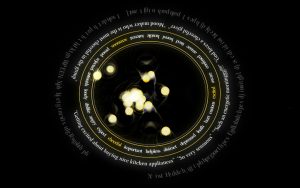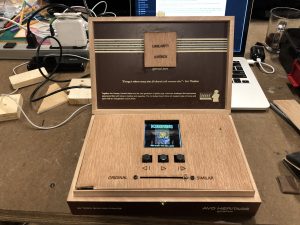Hye Ryeong Shin, Yeonhee Lee
A magical flame that grants your wishes!
http://www.yeonheelee.com/category/01/wintershow2017/
Description
Blowing out birthday candles. Wishing upon a star. These actions represent two of the most traditional wish-making methods. Inspired by common conditioning towards wishing in these scenarios, and built upon Yeonhee Lee’s previous LED birthday cake midterm project, Wish Upon a Star is an interactive ICM/PComp final project by Yeonhee Lee and Hye Ryeong Shin.
Our project consists of a dark booth containing a webcam and monitor screen, with an electric match and LED candles presented in front of them. In its dormant state, the LED candles will be off and the screen will say “Strike the Match & Light the Closest Candle.” The user can turn on the LEDs with our handmade electric match, changing the screen into a dazzling night sky with instructions to “Make a wish and blow out the candles.” The user can then blow out the LED candles, which will trigger the stars on the screen to fall like a meteor shower. After the stars fall, the screen will reveal a surprise snapshot of the user during the moment he or she was making a wish, with two randomly generated elements on the photo: a frame design and a memorable quote related to wish-making. The screen will then present the user with an option to download the photo. The user can choose yes or no by nodding or shaking their heads, which will be detected by our hidden webcam. If the user shakes their head, the screen returns to its dormant state. If they nod, the screen will present a Twitter link and a QR code where the user can download the photo.
Our main theme and aim of this project was to create a fun, interactive, and memorable experience associated with wish-making through safe, flameless LED candles and animated shooting stars.
Classes
Introduction to Computational Media, Introduction to Physical Computing






